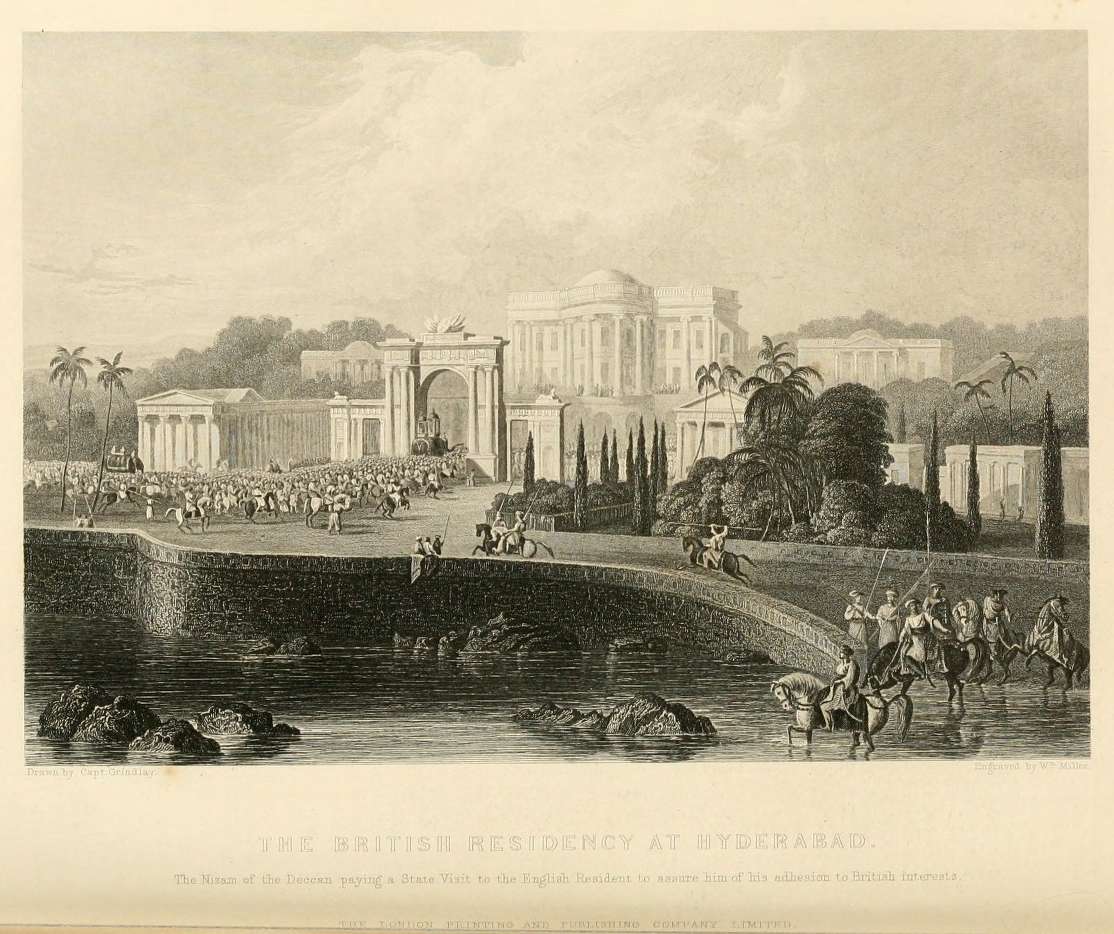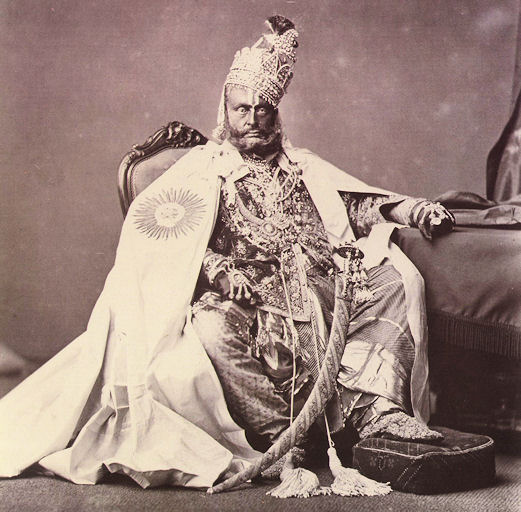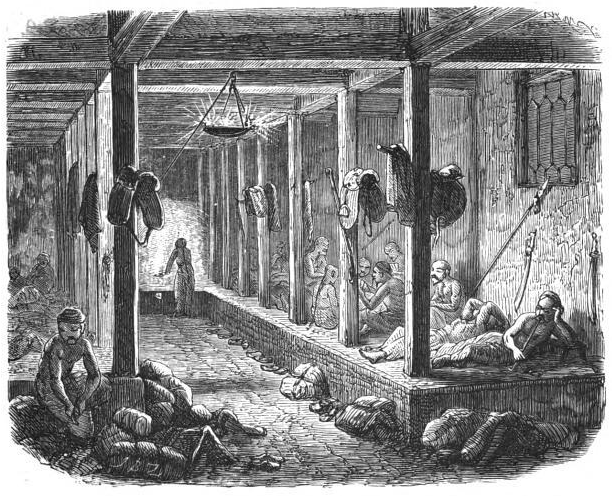|
Indore Residency
Indore was one of the residencies of British India. Indore Residency included most of Indore State, and, after 1933, Rewa State, which formerly belonged to Bagelkhand Agency. It was part of Central India Agency. British Residents List of British Residents of the Indore Residency. *1840–1844: Sir Claude Martin Wade (b. 1794 – d. 1861) *1845–1859: Robert North Collie Hamilton: (b. 1802 – d. 1887) *1859–1861: Sir Richmond Campbell Shakespear (b. 1812 - d. 1861) *1861–1869: Richard John Meade (b. 1821 – d. 1899) *1869–1881: Henry D. Daly *1881–1888: Henry Lepel-Griffin (b. 1838 – d. 1908) *1888–1890: P.F. Henvey *1890–1894: R.J. Crosthwaite *1894–1899: David W.K. Barr *1899–1902: Robert Henry Jennings *1902–1903: Francis Younghusband Lieutenant Colonel Sir Francis Edward Younghusband, (31 May 1863 – 31 July 1942) was a British Army officer, explorer and spiritual writer. He is remembered for his t ... [...More Info...] [...Related Items...] OR: [Wikipedia] [Google] [Baidu] |
Residencies Of British India
The Residencies of British India were political offices, each managed by a Resident (title), Resident, who dealt with the relations between the British Government of India and one (or a territorial set) of princely states. History The Residency system has its origins in the system of subsidiary alliances devised by the British after the Battle of Plassey in 1757, to secure Bengal from attack by deploying East India Company troops of the Bengal Army within friendly Native States. Through this system, the Indian Princes of these Native States were assured of protection from internal or external aggression, through deployment of company troops. In return they had to pay for the maintenance of those troops and also accept a British Resident in their court. The Resident was a senior British official posted in the capital of these Princely States, technically a diplomat but also responsible for keeping the ruler to his alliance.Metcalf, Barbara D., and Thomas R. Metcalf, ''A Concise H ... [...More Info...] [...Related Items...] OR: [Wikipedia] [Google] [Baidu] |
Indore State
Indore State was a kingdom within the Maratha Confederacy ruled by the Maratha Holkar, Holkar dynasty. After 1857, Indore became a 19-Salute state, gun salute princely state within the Central India Agency of the Indian Empire (1876–1947), Indian Empire under British protection. Indore State was located in the present-day Indian state of Madhya Pradesh, with its capital at the city of Indore. The state had an area of 24,605 km2 and a population of 1,325,089 in 1931. Other important towns besides Indore were Rampura, Neemuch, Rampura, Khargone, Maheshwar, Mehidpur, Barwaha, and Bhanpura; there were a total of 3,368 villages. History By 1720, the headquarters of the local pargana was transferred from Kampel, Indore, Kampel to Indore due to the increasing commercial activity in the city. On 18 May 1724, the ''Nizam'' accepted the rights of the Maratha Peshwa Bajirao I, Baji Rao I to collect chauth (taxes) from the area. In 1733, the Peshwa assumed full control of ... [...More Info...] [...Related Items...] OR: [Wikipedia] [Google] [Baidu] |
Rewa State
Rewa State, also known as Rewah, was a kingdom and later princely state of India, surrounding its eponymous capital, the town of Rewa. With an area of about , Rewa was one of the largest princely states in the Bagelkhand Agency and the second largest in Central India Agency. Rewa was also the third-wealthiest principality in Central India, with an average revenue of 2.9 million rupees in 1901. The Bagelkhand Agency was dissolved in 1933, following which Rewa was placed under the authority of the Indore Residency. Rewah state had a 15-gun salute. History According to legend, the kingdom of Rewa was founded around 1140 CE. On 5 October 1812, it became a British protectorate. Between 1 April 1875 and 15 October 1895, Rewa remained under the direct colonial administration of British India. The ruler of Rewa ruled from Bandhavgarh during the founding reign of Raja Vyaghra Dev, who was a direct descendant of Gujarati warrior king Vir Dhawal. In 1617, Maharaja Vikramaditya S ... [...More Info...] [...Related Items...] OR: [Wikipedia] [Google] [Baidu] |
Bagelkhand Agency
The Bagelkhand Agency was a British political unit which managed the relations of the British with a number of autonomous princely states existing outside British India, namely Rewa and 11 minor states, of which the most prominent were Maihar, Nagod and Sohawal. Other principalities included Jaso, Kothi, Baraundha (aka Patharkachhar) as well as the Kalinjar Chaubes, consisting of the princely estates of Paldeo, Kamta-Rajaula, Taraon, Pahra and Bhaisaunda.Malleson, G. B. ''An historical sketch of the native states of India,'' London 1875, Reprint Delhi 1984 History The Agency was established in March 1871 and was named after the Bagelkhand region. From 1871 to 1933 the Agency was under the political supervision of the Governor-General of India's Agent for Central India, and under the direct supervision of a political Agent residing ordinarily at Singrauli. The total area was , and the population in 1901 was 1,555,024, a decrease of 11% over the previous census ten yea ... [...More Info...] [...Related Items...] OR: [Wikipedia] [Google] [Baidu] |
Central India Agency
The Central India Agency was created in 1854, by amalgamating the Western Malwa Agency with other smaller political offices which formerly reported to the Governor-General of India. The agency was overseen by a political agent who maintained relations of the Government of India with the princely states and influence over them on behalf of the Governor-General. The headquarters of the agent were at Indore. List of Divisions and Princely States/districts of Agency Bundelkhand Agency : The Bundelkhand Agency was bounded by Bagelkhand to the east, the United Provinces to the north, Lalitpur District to the west, and the Central Provinces to the south. Bagelkhand Agency was separated from Bundelkhand in 1871. In 1900 it included 9 states, the most important of which were Orchha, Panna, Samthar, Charkhari, Chhatarpur, Datia, Bijawar and Ajaigarh. The agency also included 13 estates and the ''pargana'' of Alampur, the latter belonging to Indore State. In 1931, all of the ... [...More Info...] [...Related Items...] OR: [Wikipedia] [Google] [Baidu] |
Claude Martin Wade
Colonel Sir Claude Martin Wade CB (3 April 1794 – 21 October 1861) was a British soldier who was Agent to the Governor-General for the Affairs of the Punjab and North-West Frontier, 1823–1840.PunjabRevenue accessed July 2007 He managed relations between the British and important rulers in India such as and Shah Shuja, King of . He was one of the first to force the |
Sir Robert Hamilton, 6th Baronet
Sir Robert North Collie Hamilton, 6th Baronet (7 April 1802 – 31 May 1887) was a British politician and East India Company civil servant. Hamilton was the eldest son of Sir Frederic Hamilton, 5th Baronet, and his wife, Eliza Ducarel Collie. He succeeded to the Baronetcy in 1853. Career He entered the East India Company civil service in 1820, and served in Benares until 1830. He was appointed Magistrate and Collector of Meerut in 1834 and served in this post for three years before moving to be Commissioner of the Agra Division from 1837 to 1841, including during the famine. His next post was as secretary to the Lieutenant Governor of the North-West Provinces from 1841 to 1852, before he became Agent to the Governor-General in Central India (1852–60). He was appointed a member of the Governor-General's Council in 1859 and Knight Commander of the KCB in 1860, before retiring from the East India Company in the latter year. On his return to England, he was a Deputy Lieutenant ... [...More Info...] [...Related Items...] OR: [Wikipedia] [Google] [Baidu] |
Richard John Meade
General Sir Richard John Meade (25 September 1821 – 20 March 1894) was a British Indian Army officer who served as the Chief Commissioner of Mysore from 1870 to 1881. Military career Meade was born at Innishannon County Cork to Captain John Meade of the Royal Navy and Elizabeth Quin. He studied at the Royal Naval School at New Cross in London, after which he received his commission as ensign and was posted to the 65th Regiment of the Bengal Native Infantry. He was part of the Central India Field Force during the troubles of 1857-59 and led the column which captured Tantya Tope and hanged him. He was the British resident in the state of Hyderabad in 1875–81. He tutored and protected Maḥbūb ʻAlī Khān, the underage nizam (ruler). Thomas Henry Thornton, Meade's biographer and author of ''General Sir Richard Meade and the Feudatory States of Central and Southern India'' (1898), regarded this position as one of the most politically challenging in India. Meade's successes ... [...More Info...] [...Related Items...] OR: [Wikipedia] [Google] [Baidu] |
Francis Younghusband
Lieutenant Colonel Sir Francis Edward Younghusband, (31 May 1863 – 31 July 1942) was a British Army officer, explorer and spiritual writer. He is remembered for his travels in the Far East and Central Asia; especially the 1904 British expedition to Tibet, led by him, and for his writings on Asia and foreign policy. Younghusband held positions including British commissioner to Tibet and president of the Royal Geographical Society. Early life Francis Younghusband was born in 1863 at Murree, British India (now Pakistan), to a British military family, being the brother of Major-General George Younghusband and the second son of Major-General John W. Younghusband and his wife Clara Jane Shaw. Clara's brother, Robert Shaw, was a noted explorer of Central Asia. His uncle Lieutenant-General Charles Younghusband CB FRS, was a British Army officer and meteorologist. As an infant, Francis was taken to live in England by his mother. When Clara returned to India in 1867 she le ... [...More Info...] [...Related Items...] OR: [Wikipedia] [Google] [Baidu] |
Oswald Bosanquet
Sir Oswald Vivian Bosanquet, KCSI, CIE (5 April 1866 – 6 November 1933) was a British administrator in India. A member of the Indian Civil Service, he spent most of his career in the Indian Political Service. At the time of his retirement, he was Agent to the Governor-General in Central India.{{Cite news , date=7 November 1933 , title=Sir Oswald Bosanquet , work=The Times , pages=8 Bosanquet was the recipient of the Kaisar-i-Hind Medal The Kaisar-i-Hind Medal for Public Service in India was a medal awarded by the Emperor/Empress of India between 1900 and 1947, to "any person without distinction of race, occupation, position, or sex ... who shall have distinguished himself (o ... in gold in 1902. He was appointed a CIE in 1910, a CSI in 1914, and promoted to KCSI in 1919. References 1866 births 1933 deaths Knights Commander of the Order of the Star of India Companions of the Order of the Indian Empire Indian Civil Service (British India) officers Indian Political ... [...More Info...] [...Related Items...] OR: [Wikipedia] [Google] [Baidu] |
James Kaye (cricketer)
James Levett Kaye (27 December 1861 – 17 November 1917) was an English first-class cricketer and an officer in both the British Army and the British Indian Army. The son of James Kaye and Elizabeth Thoroton, he was born at Potters Bar in December 1861. He was educated at Winchester College, playing for the college cricket team for three years, in addition to representing the college at racquets. From Winchester, Kaye proceeded to the Royal Military College, Sandhurst. He graduated from there into the Royal Berkshire Regiment as a lieutenant in September 1882. Prior to his graduation, he made a single appearance in first-class cricket for Hampshire against the Marylebone Cricket Club at Lord's in 1881. Playing as a wicket-keeper and opening batsman, he was dismissed for 3 runs in Hampshire's first innings by Wilfred Flowers, while in their second innings he was dismissed for 11 runs by Arnold Rylott; as wicket-keeper, he made a single stumping. With the Berkshire Regimen ... [...More Info...] [...Related Items...] OR: [Wikipedia] [Google] [Baidu] |
Residencies Of British India
The Residencies of British India were political offices, each managed by a Resident (title), Resident, who dealt with the relations between the British Government of India and one (or a territorial set) of princely states. History The Residency system has its origins in the system of subsidiary alliances devised by the British after the Battle of Plassey in 1757, to secure Bengal from attack by deploying East India Company troops of the Bengal Army within friendly Native States. Through this system, the Indian Princes of these Native States were assured of protection from internal or external aggression, through deployment of company troops. In return they had to pay for the maintenance of those troops and also accept a British Resident in their court. The Resident was a senior British official posted in the capital of these Princely States, technically a diplomat but also responsible for keeping the ruler to his alliance.Metcalf, Barbara D., and Thomas R. Metcalf, ''A Concise H ... [...More Info...] [...Related Items...] OR: [Wikipedia] [Google] [Baidu] |




